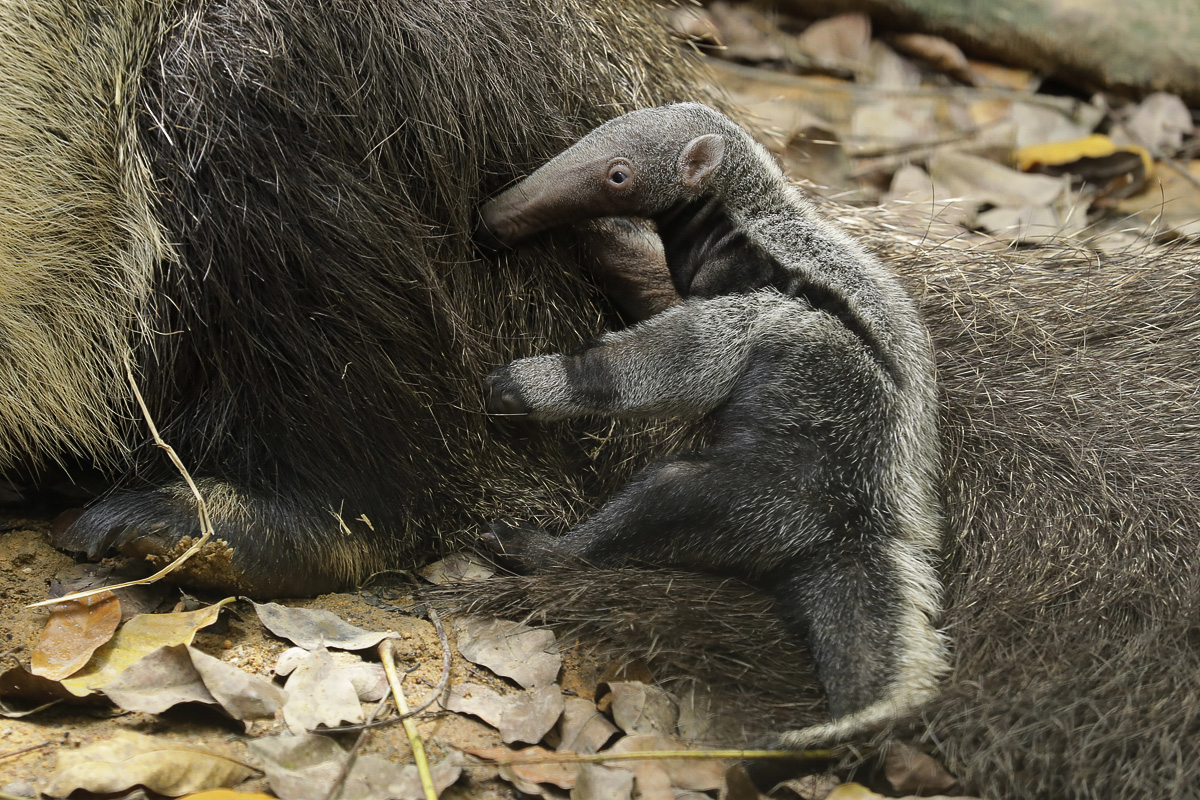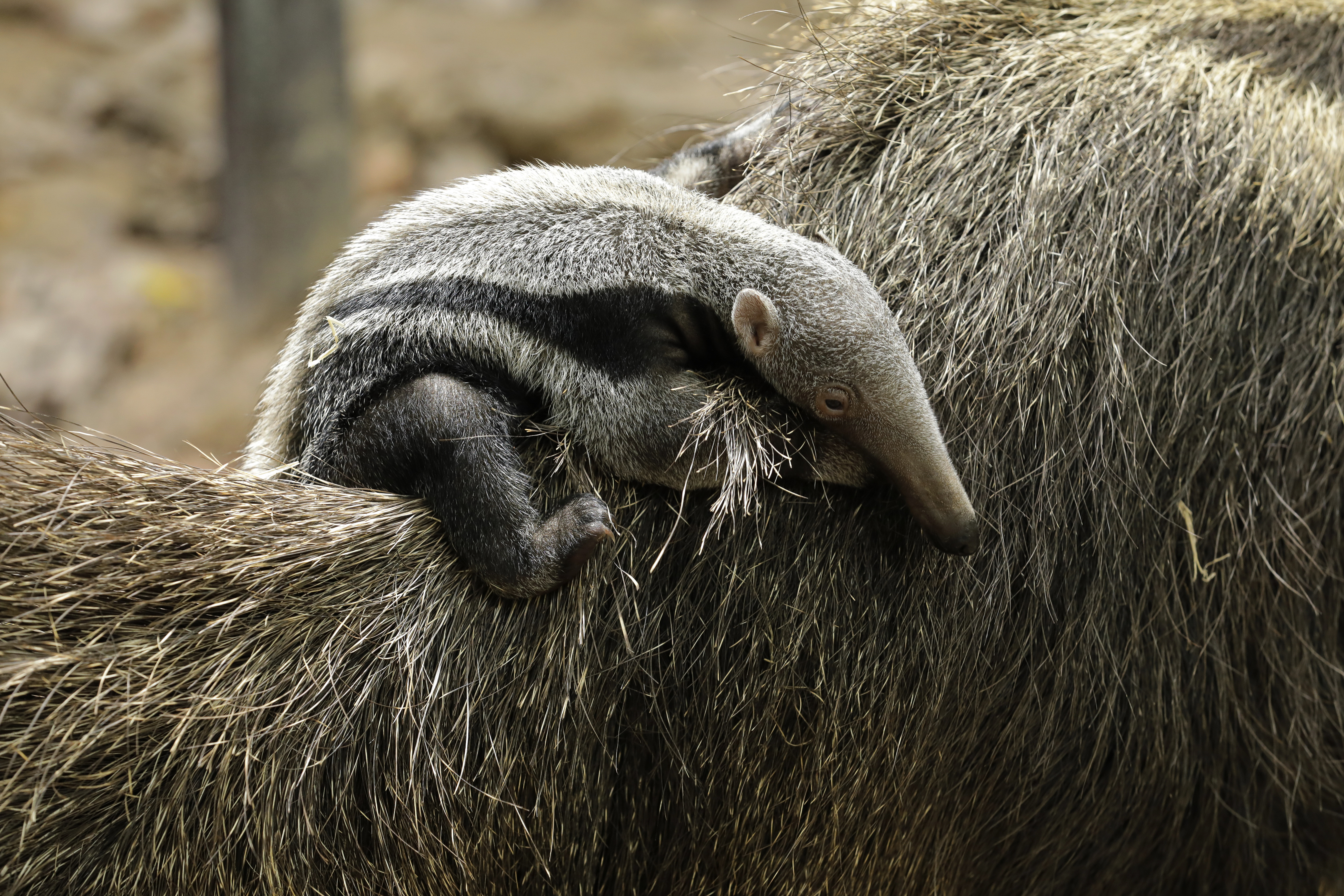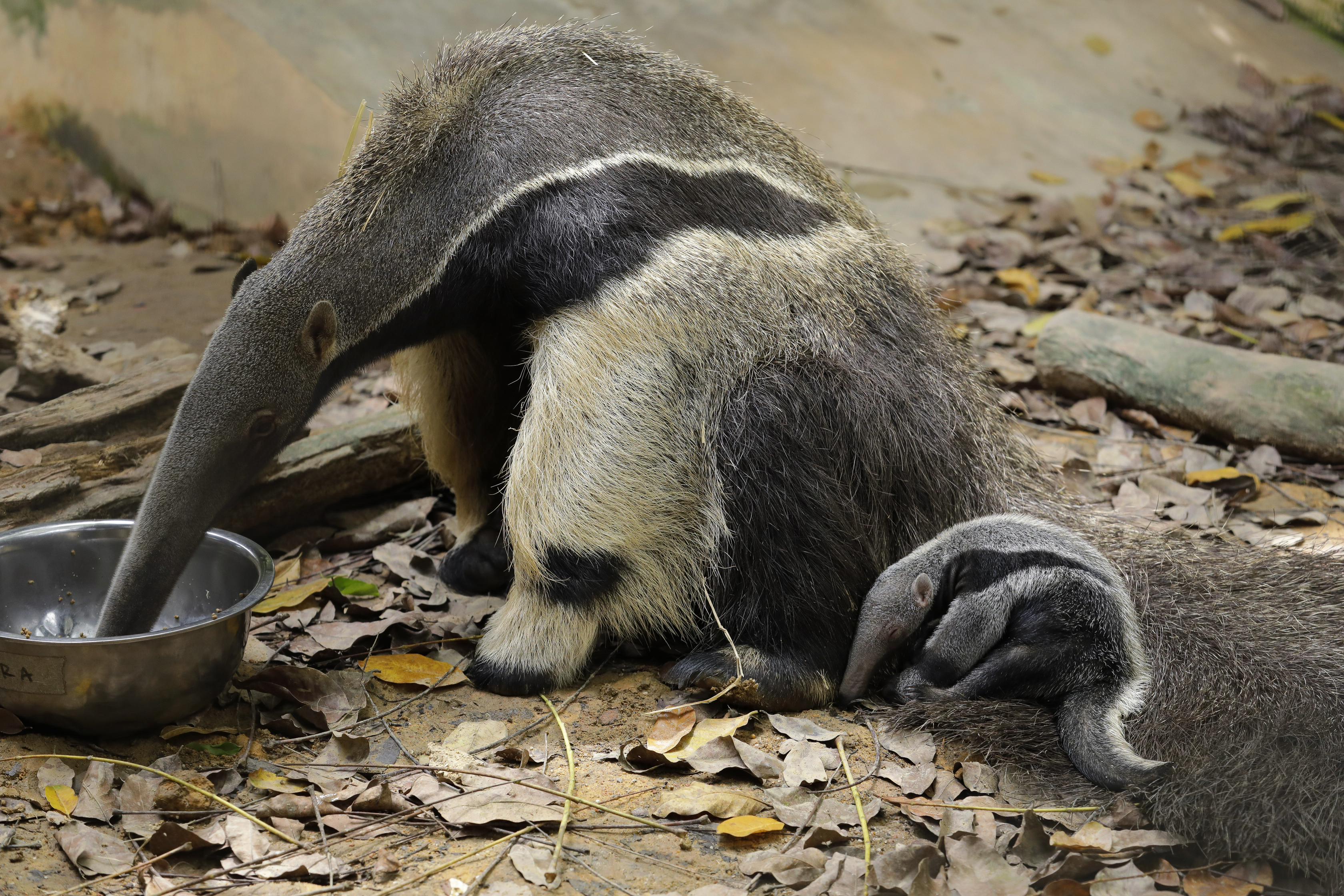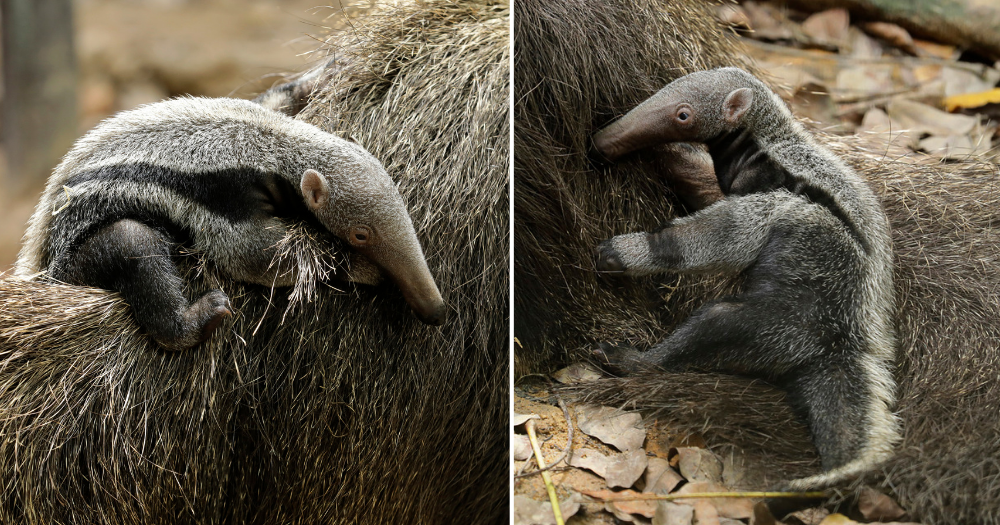River Safari Singapore has welcomed a new addition to its anteater family.
Baby not-so-giant Giant anteater
A new pup joined the family of three on July 17, 2019, bringing the park's total anteater count to four, according to a press release from Wildlife Reserves Singapore (WRS).
 Photo courtesy of Wildlife Reserves Singapore
Photo courtesy of Wildlife Reserves Singapore
As an experienced mother, Iapura had no difficulty giving birth to another pup.
Iapura had previously given birth to another female pup, named Leona, on March 3, 2018.
Giant anteaters give birth only once a year, after a six-month gestation period.
Weighing only 1.6kg at birth, the yet-to-be-named pup is currently about more than a month old and spends its time clinging to its mother's back and climbing on and off.
 Photo courtesy of Wildlife Reserves Singapore
Photo courtesy of Wildlife Reserves Singapore
Newborn pups tend to stay in this position on top of their mothers as their fur camouflages with that of the parent's, making them harder to spot. This helps protect the pups in the wild.
The pup is still feeding on her mother's milk, but will be introduced to a solid food diet of insectivore pellets and ant eggs at around five months old.
 Photo courtesy of Wildlife Reserves Singapore
Photo courtesy of Wildlife Reserves Singapore
Vote online to name the pup
WRS is also allowing members of the public to vote to name the pup.
The pup's keepers have currently shortlisted two potential names—"Amazon", after the Giant anteater's natural habitat in the Amazon rainforest, or "Estrella", which means "star" in Spanish.
You can vote for your preferred name in the comments section of the video below. Voting ends on August 28.
Visitors to River Safari will only be able to spot the pup at the Giant anteater exhibit along the Amazon River Quest boat ride when it turns four months old.In the meantime, guests can still visit the father Zapata and sister Leona at the exhibit.
Vulnerable species
Giant anteaters are the largest of the four species of anteaters, and can grow up to 2m in length from the tip of their snout to the end of their bushy tail.
They use sharp, curved claws to tear open anthills or insect mounds, and long tongues to probe inside for insects. They are able to flick their tongue up to 160 times per minute, and have no teeth.
Currently classified as vulnerable according to the International Union for Conservation of Nature, they are native to South America.
Top photo courtesy of Wildlife Reserves Singapore
If you like what you read, follow us on Facebook, Instagram, Twitter and Telegram to get the latest updates.
